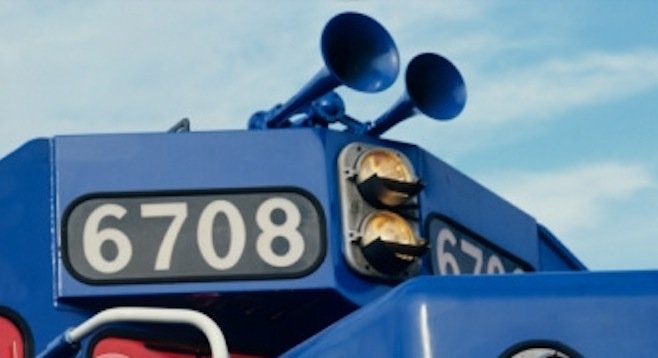 Facebook
Facebook
 X
X
 Instagram
Instagram
 TikTok
TikTok
 Youtube
Youtube

On October 24, the Los Angeles-San Diego-San Luis Obispo Rail Corridor Agency (known as LOSSAN) made available to the public new information on the plans affecting its 7.6 million annual passengers and the residents in the coastal communities of North County.
In a new agency publication, LOSSAN says the improvements will focus on three main areas of rail transportation in coastal North County — adding Express Lanes on I-5, double-tracking the rail line, and enhancing coastal habitat and coastal access. It will offer “a balanced transportation system to provide travelers with choices for the future while enhancing the quality of life for residents.”
During the next 20 years, the project will cost approximately $1 billion for improvements along the 60-mile San Diego segment, from the Orange County line to downtown San Diego. Part of the nation’s second-busiest rail corridor, the local project will include double-tracking approximately 30 miles of rail line, replacing aging rail bridges, and enhancing grade separations and crossings.
Currently, about 50 trains use the coastal tracks daily: the Coaster, Sprinter, Metrolink, Amtrak, and freight haulers Union Pacific and BNSF. The plans will double the daily usage, to the chagrin of trackside residents.
Train agencies have been criticized for their engineers’ unnecessary blowing of their horns in the middle of the night; the agencies claim federal guidelines require it. Local communities have looked into either changing the laws or installing “wayside” signal alerts that direct the attention-getting horn sounds only to those near a track’s road crossing.
California’s controversial and court-challenged L.A. to San Francisco high-speed rail project (now known as the “Brown-dogle” or “Jerry Brown’s Crazy Train”) never included a San Diego connection. Any future high-speed rail plans for San Diego would have to be down the I-15 corridor from the Inland Empire and not part of the LOSSAN coastal rail projects.


On October 24, the Los Angeles-San Diego-San Luis Obispo Rail Corridor Agency (known as LOSSAN) made available to the public new information on the plans affecting its 7.6 million annual passengers and the residents in the coastal communities of North County.
In a new agency publication, LOSSAN says the improvements will focus on three main areas of rail transportation in coastal North County — adding Express Lanes on I-5, double-tracking the rail line, and enhancing coastal habitat and coastal access. It will offer “a balanced transportation system to provide travelers with choices for the future while enhancing the quality of life for residents.”
During the next 20 years, the project will cost approximately $1 billion for improvements along the 60-mile San Diego segment, from the Orange County line to downtown San Diego. Part of the nation’s second-busiest rail corridor, the local project will include double-tracking approximately 30 miles of rail line, replacing aging rail bridges, and enhancing grade separations and crossings.
Currently, about 50 trains use the coastal tracks daily: the Coaster, Sprinter, Metrolink, Amtrak, and freight haulers Union Pacific and BNSF. The plans will double the daily usage, to the chagrin of trackside residents.
Train agencies have been criticized for their engineers’ unnecessary blowing of their horns in the middle of the night; the agencies claim federal guidelines require it. Local communities have looked into either changing the laws or installing “wayside” signal alerts that direct the attention-getting horn sounds only to those near a track’s road crossing.
California’s controversial and court-challenged L.A. to San Francisco high-speed rail project (now known as the “Brown-dogle” or “Jerry Brown’s Crazy Train”) never included a San Diego connection. Any future high-speed rail plans for San Diego would have to be down the I-15 corridor from the Inland Empire and not part of the LOSSAN coastal rail projects.